SIGGRAPH 2016 Trip Report
We had another great trip to SIGGRAPH, the annual computer graphics conference!
We kicked off this year's trip at the co-located Web3D conference. Sean Lilley and I presented the most comprehensive tutorial yet on 3D Tiles. The audience was highly engaged. The slides and sample tilesets are here.
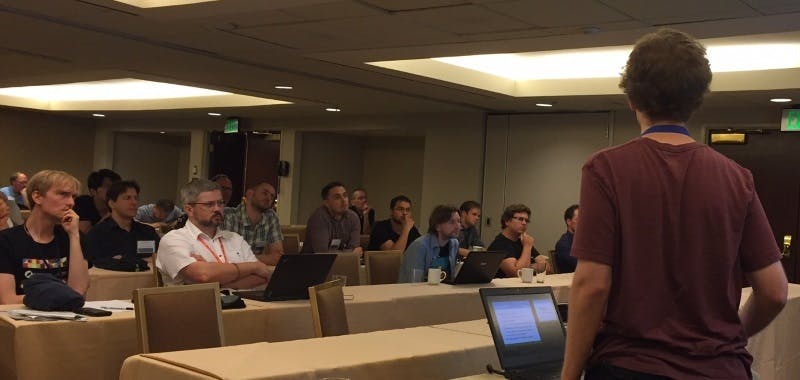
Sean presenting the 3D Tiles tutorial at Web3D.
There was quite a buzz about Cesium, 3D Tiles, and glTF at Web3D. We are thrilled to see so many projects, such as Open3D and virtualcityMAP, using 3D Tiles and presenting their work. We look forward to next year where we expect 3D Tiles to act as a platform for tiling and LOD research.
To start SIGGRAPH off, I participated in the WebGL educators panel with Ed Angel, Dave Shreiner, and Eric Haines. This was a unique opportunity for me since I learned graphics from their books (Eric's Udacity course is even part of our ramp-up material for new Cesium developers).
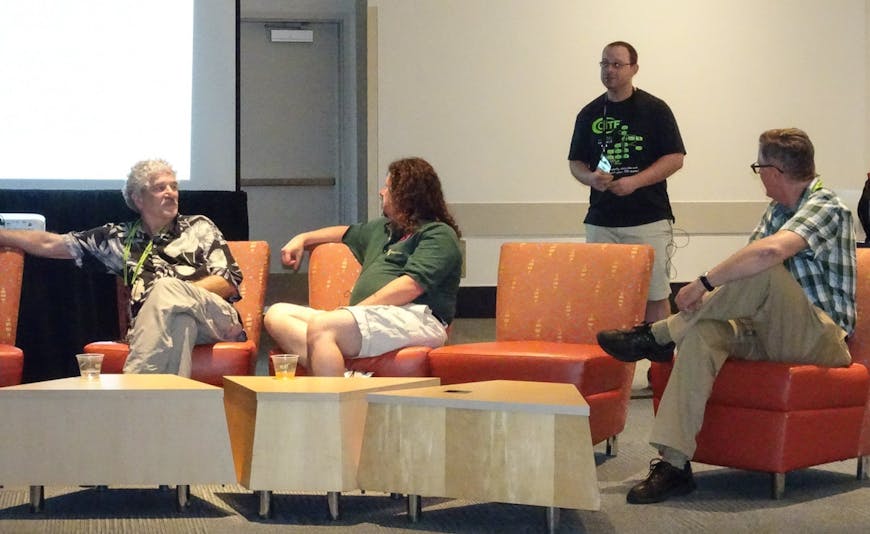
The WebGL educators panel at SIGGRAPH. Picture thanks to Mauricio Vives.
I presented two open-source student projects that should also be of interest to the Cesium community. The WebGL 2 Samples Pack by Shuai Shao (Shrek) and Trung Le is a great set of simple code examples for learning WebGL 2. gltf-pipeline, started by Richard Lee, is an optimization pipeline for glTF assets that we are contributing to and integrating into Cesium's online model converter. For more on these projects, here's a few slides.
After the educators panel, we went to the WebGL dinner, where folks from Khronos, Google, NVIDIA, Unity, Autodesk, BioDigital, Cesium, and elsewhere talked WebGL and related topics. Big thanks to Eric Haines for co-organizing this!
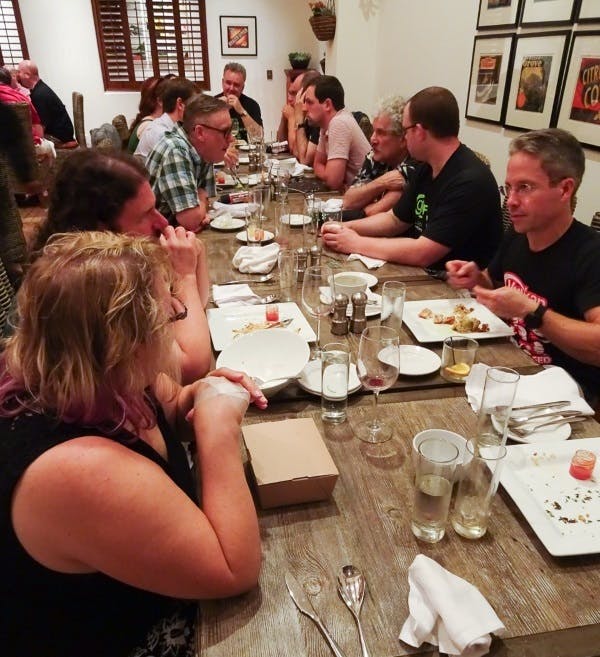
Great group for dinner. Picture thanks to Mauricio Vives.

With Ken Russell, Gary Li, and Sean Lilley. Picture thanks to Mauricio Vives.
The Cesium team was honored to be invited to present at the Carto BOF for the fourth year in a row, organized by Theresa-Marie Rhyne. Sean Lilley presented an overview of 3D Tiles along with presenters from Web3D, MATIS Lab, and Esri. Sean's slides are here.
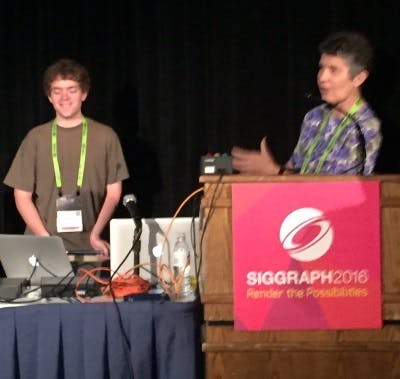
Theresa-Marie introduces Sean.
Tom Fili also organized the fourth annual Cesium BOF, including presentations from the Cesium team, Bentley, Propeller, Fraunhofer, and AGI. The themes included using Cesium to visualize data collected from drones, and using 3D Tiles.
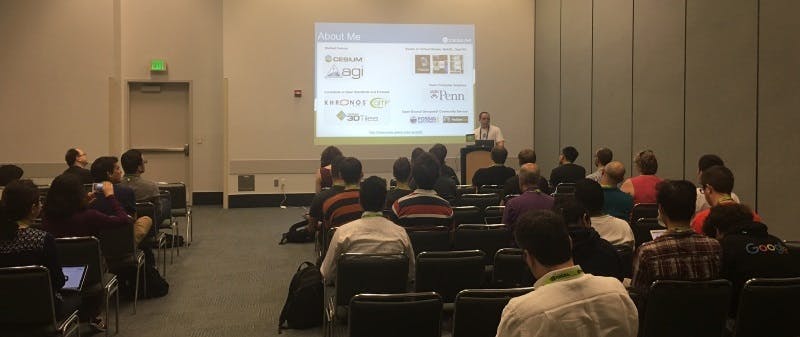
I presented the Cesium State of the Union talk covering community growth, new features, and future plans.
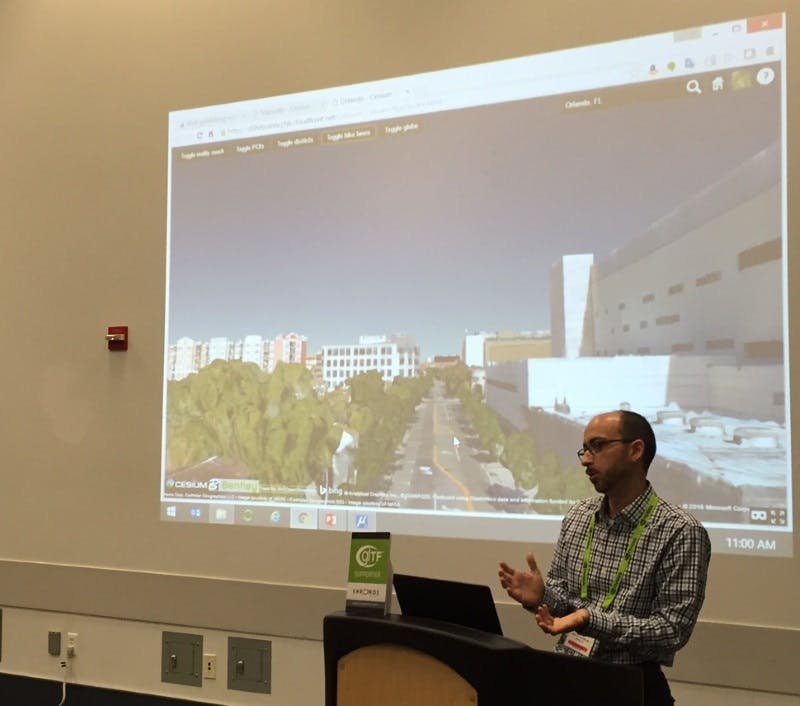
Makai Smith presented Bentley ContextCapture export to 3D Tiles.
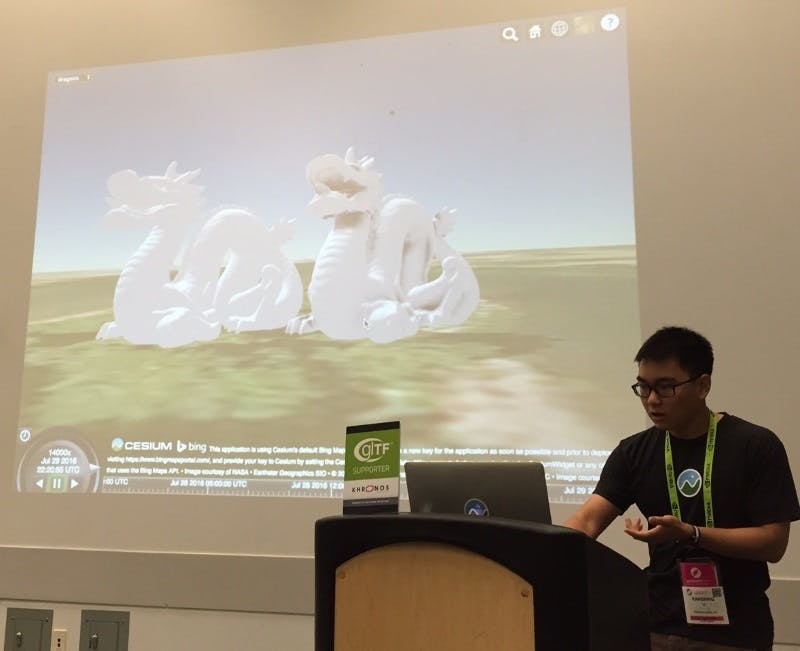
Gary Li presented the new ambient occlusion baking stage in gltf-pipeline.
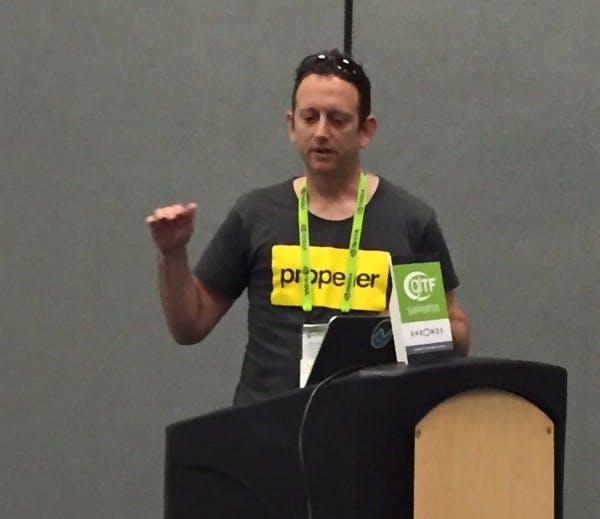
Chris Cooper presented how Propeller uses Cesium for visualizing data captured by Drones.
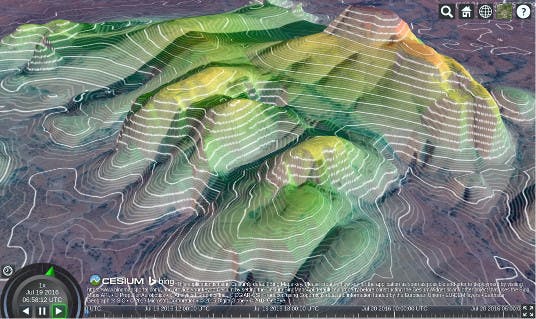
Chris also announced an open-source elevation visualizer plugin for Cesium: cesium-elevation-gradient.
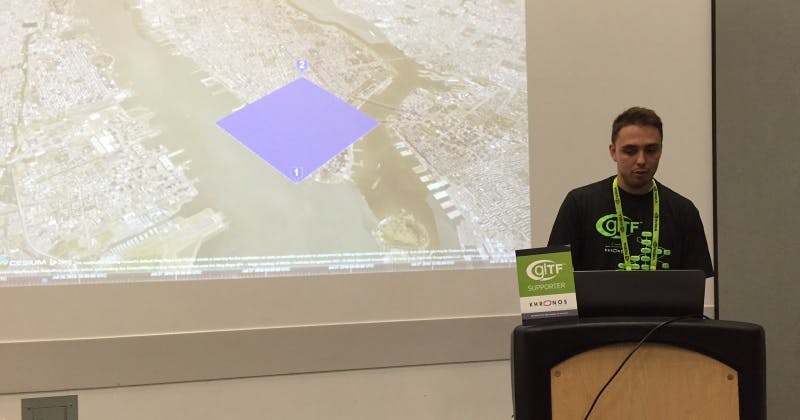
Ralf Gutbell from Fraunhofer presented using 3DPS for data discovery and 3D Tiles for data delivery with nifty features like requesting the subset of a tileset.
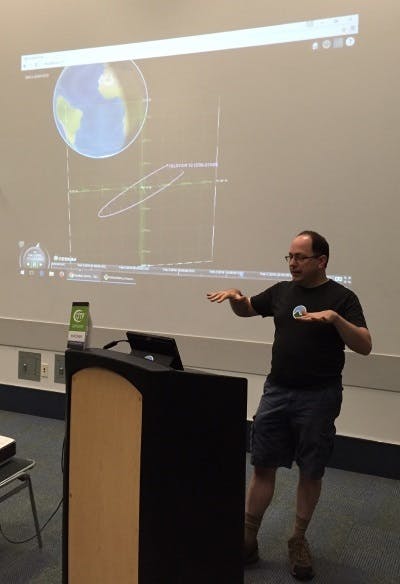
Ed Mackey from AGI made rocket science sound simple with Cesium.
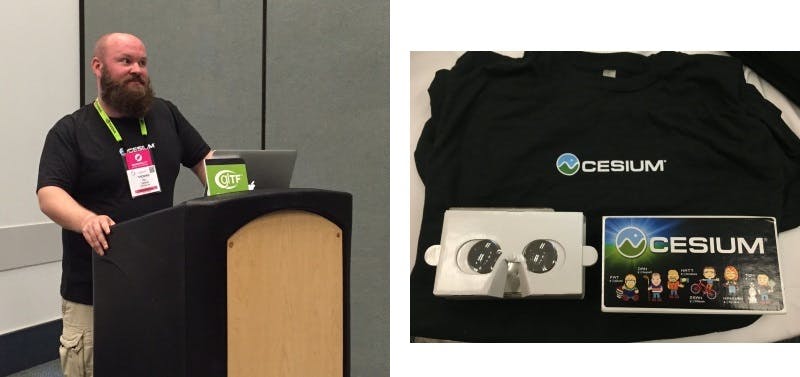
Tom Fili gave away the latest Cesium swag. Swag picture from Thomas Dickerson.
The WebGL & glTF BOF was very well attended and started off with some great news: 100% of the WebGL 2.0 conformance tests are passing!
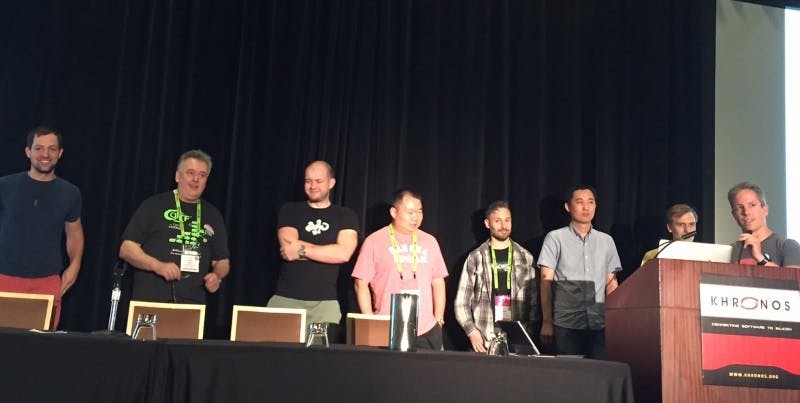
Congrats to the WebGL Working Group!
A common theme was streaming assets as demonstrated by Cesium, Esri, BioDigital, and Starbreeze Studios. Another major theme was glTF: engines are either using glTF or using an engine-specific format just like it! The trend is towards more glTF usage so, as an industry, we are able to collaborate on open-source tools and an interoperable ecosystem that we all benefit from. The folks I talked to really seem to get this and are excited to move in this direction. Oculus's support for glTF helped set the example; their own format is just like glTF, and moving to glTF enables using its software ecosystem.
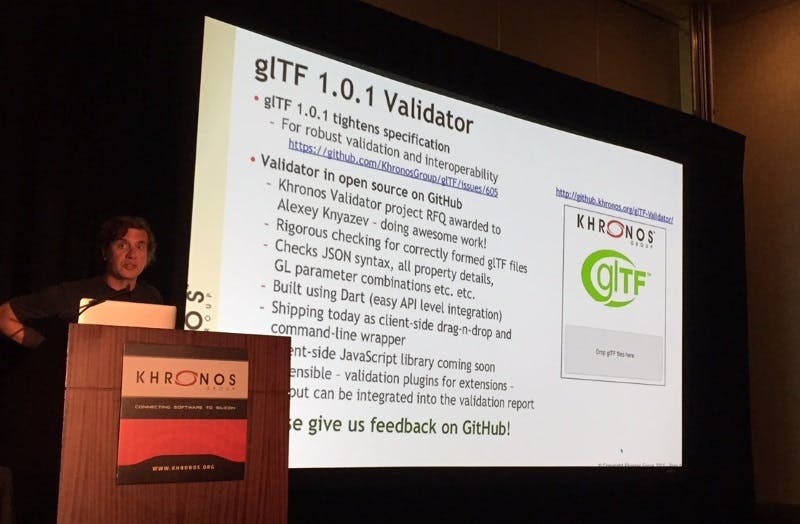
Tony Parisi announces the open-source glTF Validator by Alexey Knyazev.
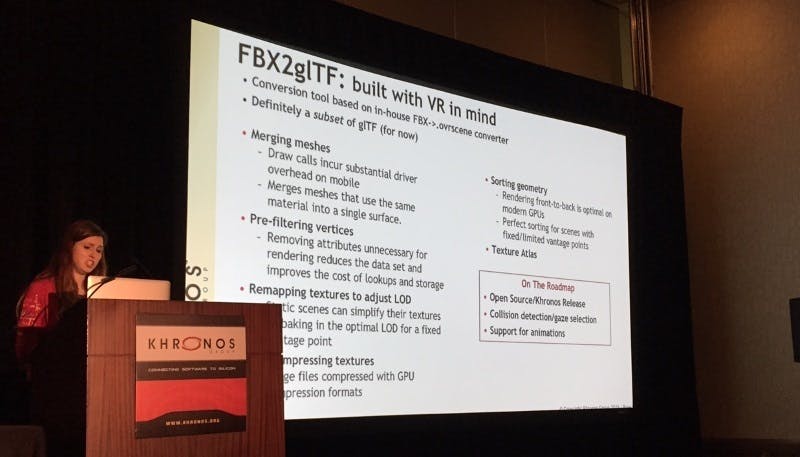
Amanda Watson from Oculus announces the upcoming open-source FBX2glTF converter tuned for mobile VR assets.

It was great to see the Cesium models being used for glTF testing in talks by Ricardo Cabello and Rémi Arnaud.
Check out the slides for each WebGL & glTF BOF talk.
After the BOF, we had a great time demoing Cesium at the Khronos party.
To catch up on more of SIGGRAPH, see Stephen Hill's list of SIGGRAPH 2016 Links.